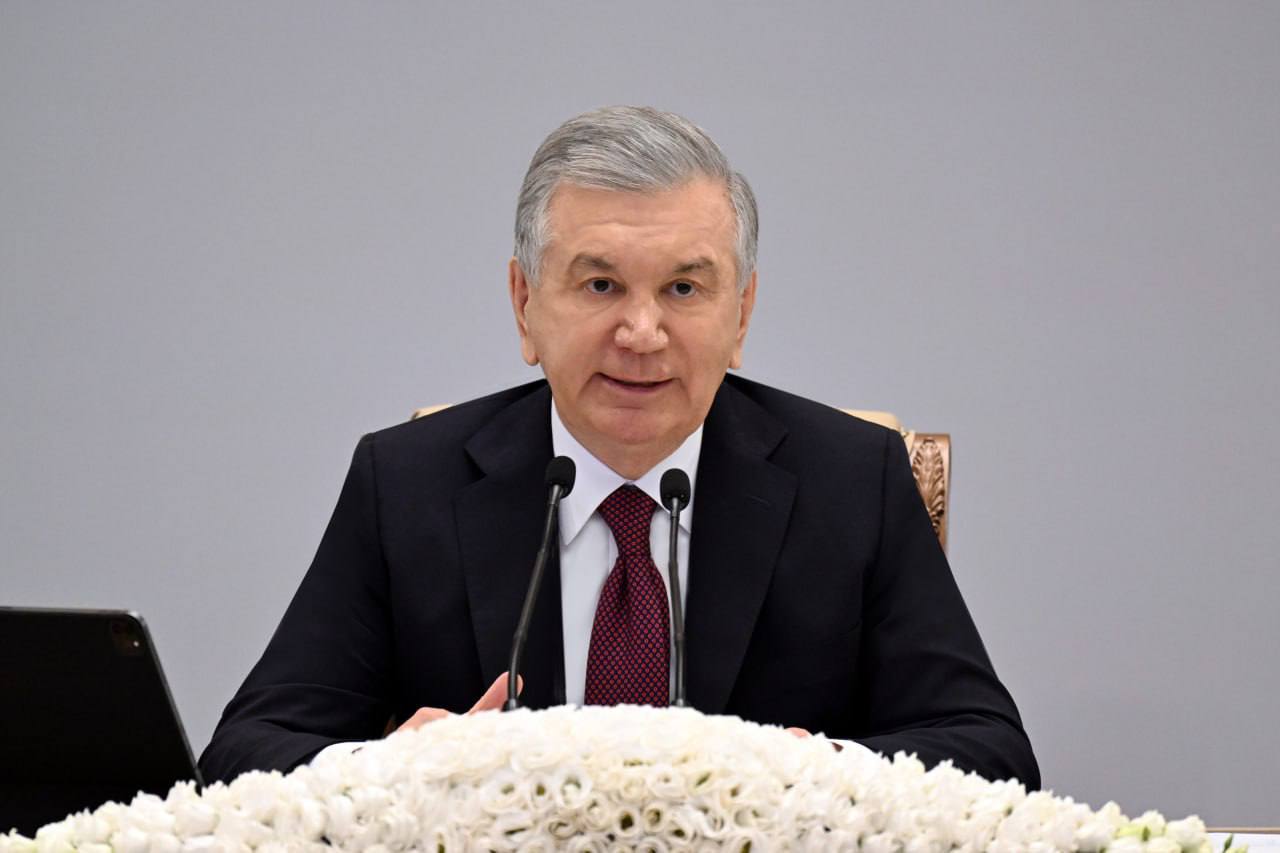BAKU, Azerbaijan, August 2. In recent years, Uzbekistan’s economy has started to turn over a new leaf. The country is throwing open its doors to the world, putting the pedal to the metal in the private sector, rolling out the red carpet for investments, and keenly carving out its niche in the global economy.
A pivotal advancement in this trajectory was the implementation of unrestricted convertibility of the sovereign currency. This strategic decision bolstered the confidence of foreign stakeholders and facilitated the active engagement of Uzbek enterprises in the global marketplace. The European Bank for Reconstruction and Development (EBRD) highlighted that the deregulation of the som in September 2017 represented a pivotal benchmark in the trajectory towards a more transparent, cohesive, and export-driven economic framework.
The EBRD communiqué articulates that it is actively overseeing the execution of the nation’s reform agenda and is committed to facilitating its successful realization.
“Uzbekistan is making progress in many areas, positively affecting the business environment, but still faces many challenges,” the paper reads.
Undoubtedly, the EBRD’s backing is noteworthy; Uzbekistan has ascended to the pinnacle among Central Asian nations regarding the magnitude of EBRD financial allocations.
So far, the bank has rolled out 180 projects, racking up a whopping $5.22 billion. Out of the bunch, 98 projects, ringing in at a whopping $2.8 billion, are currently up and running.
In the last eight years, EBRD funding in Uzbekistan has really taken off—jumping from $517 million in 2019 to a whopping $938 million in 2024. The tally of supported projects during that stretch jumped from 13 to 34, hitting the ground running.
The EBRD engages in synergistic collaboration with governmental
entities to enhance the investment ecosystem. The initiatives
undertaken by the Foreign Investors’ Council are notably bolstered,
establishing a pivotal nexus for discourse between governmental
entities and the corporate sector. All this suggests that the
structural adjustments towards a liberalized economic framework
are, in fact, yielding positive outcomes. The credibility of
international institutions is not an arbitrary phenomenon; it
emerges from substantive transformations that are actively
occurring.
Nonetheless, this confidence was cultivated not solely through
modifications within the monetary domain. Substantial efforts are
underway to optimize the operational environment for enterprises.
Streamlining of administrative protocols is underway, with a
concerted effort to mitigate bureaucratic impediments and
institutionalize safeguards for the protection of entrepreneurial
rights. This is particularly critical for the scalability and
sustainability of SMEs, especially within regional ecosystems.
It is pertinent to revisit Shavkat Mirziyoyev's address at the 2022 Investment Forum.
“First of all, we began creating favorable conditions for entrepreneurship by removing all obstacles that previously prevented investors from entering the Uzbek market and freely conducting their activities,” he had said.
The efficacy of systemic transformations in Uzbekistan is
further evidenced by its positioning in global indices. In the
preceding quinquennium, the nation has ascended 48 ranks in the
Economic Freedom Index and garnered an increment of 28 points in
the Harvard Economic Complexity Index. The esteemed rating agency
S&P has elevated Uzbekistan’s sovereign credit outlook from
“stable” to “positive,” signifying an enhanced level of confidence
in the nation’s fiscal stability and governance frameworks.
Due to these strategic initiatives, Uzbekistan is emerging as a
pivotal entity in the global arena. In the fiscal year 2024, the
influx of foreign capital surged to an impressive $35 billion,
while the aggregate value of exports culminated at $27 billion.
Strategic objectives have been delineated—to amplify export metrics
to $30 billion by 2025, emphasizing not primary commodities but
high-value-added products.
Uzbekistan is in the catbird seat to boost its foreign trade
numbers while also turning the export framework on its head.
Currently, the textile and electrical engineering sectors are
experiencing exponential expansion. The textile export sector has
experienced a threefold increase, with a supply chain network that
encompasses over 70 nations, integrating key markets within the
European Union and the Asian continent.
Free Economic Zones (FEZs) are the bread and butter of economic
growth of the nation. In 2024, a total of 589 enterprises were in
the thick of things in FEZs, yet only a mere 18 percent of their
products made it out the door to foreign shores. This signifies
that a multitude of initiatives are presently concentrated on the
internal marketplace. Consequently, a strategic resolution was
undertaken to focus on the development of Free Economic Zones
(FEZs) that are primarily designed for engagement with the external
market. This will facilitate the mitigation of redundancy and
concentrate efforts on strategically pivotal domains.
One such initiative is the textile aggregation hub in the Namangan
region. A comprehensive export hub is set to be established across
a 30-hectare expanse in strategic collaboration with international
brands.
Collaboration with the European Union is pivotal in the enhancement
of export dynamics. Subsequent to the acquisition of GSP+
designation, there was a quantifiable escalation in export volumes
to the EU, exhibiting a 1.5-fold augmentation.
As President Mirziyoyev has previously articulated, the republic
is strategically positioned to amplify the throughput of finished
product exports, targeting a twofold increase within the
forthcoming triennium. To realize this objective, it is imperative
to enhance production capabilities while simultaneously
facilitating equitable access for Uzbek producers to global
markets.
In this framework, the integration into the WTO assumes a pivotal
role in the geopolitical landscape. Negotiations have reached
fruition with a consortium of 25 sovereign entities, encompassing
the United States, the People's Republic of China, the Republic of
Türkiye, and various member states of the European Union. Accession
to the WTO will facilitate market penetration across a network of
over 160 nations and furnish enhanced assurances for Uzbek
manufacturers. This is particularly critical for sectors like
textiles, chemicals, and construction—domains poised for
scalability and global market penetration.
As we witness the emergence of novel market opportunities and the
escalation of export trajectories, the significance of logistics is
amplifying exponentially. In the absence of robust logistical
frameworks, prospective expansion may encounter significant
constraints. The China–Kyrgyzstan–Uzbekistan railway initiative is
increasingly becoming a focal point of strategic importance. This
trajectory has the potential to evolve into a critical terrestrial
conduit linking the Eastern and Southern Asian regions. This
initiative will not only enhance the logistical velocity of goods
transit but also position Uzbekistan as a pivotal nexus for the
convergence of significant cargo streams. This initiative will
catalyze employment opportunities, invigorate localized economic
growth, and amplify the nation’s export capacity.
The agricultural sector is also in the thick of market
transformations. Agricultural producers have acquired enhanced
autonomy, enabling them to strategically select their cultivation
outputs, optimize their market channels, and engage in contractual
agreements with preferred stakeholders. This enhances market
visibility and equity. Primarily, it catalyzes competitive dynamics
and enhances the caliber of offerings.
Consequently, the trajectory towards a liberalized economic
framework is not merely a transient initiative. This is a
meticulously crafted strategic framework aimed at optimizing
sustained outcomes over an extended horizon. In the face of
external adversities, Uzbekistan is unequivocally illustrating that
this trajectory is producing tangible dividends: capital influx is
on the rise, trade outflows are amplifying, and the local
manufacturing sector is advancing. The myriad of transformations
observed can be attributed to a meticulously orchestrated state
policy framework that has been progressively operationalized in
recent years.
Stay up-to-date with more news on Trend News Agency's WhatsApp channel







